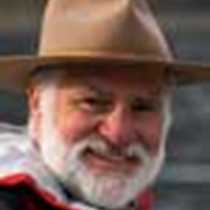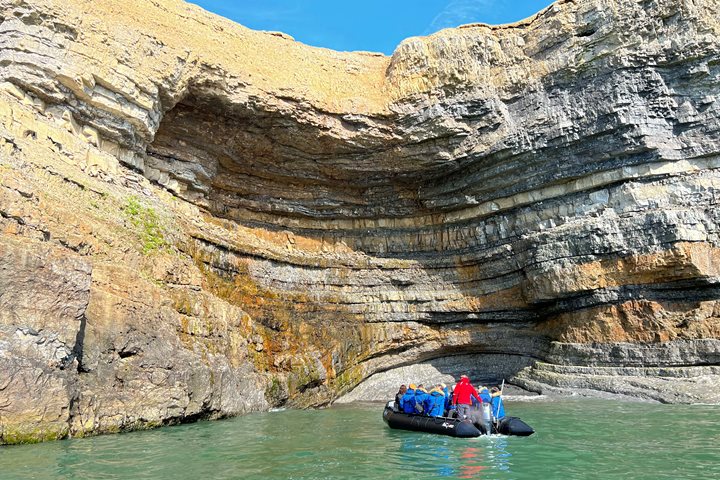Today we reached our farthest point north, an impressive 81° 24.5¢ N. A mere 515.5 nautical miles from the North Pole! But the excitement at reaching this ‘landmark’ means that we are getting ahead of ourselves.
During the early hours of the morning, National Geographic Endurance approached the Seven Islands under overcast skies with sunny spots and very calm seas. The northernmost island in the group is named Rossøya. It was on this island that the explorer Wally Herbert made landfall after his epic crossing of the Arctic Ocean via the North Pole in 1969, becoming the first person to unequivocally make that landmark. His incredible achievement went largely unreported, as it coincided with Neil Armstrong and Buzz Aldrin landing on the moon.
We sailed along the coastline of Parryøya looking for marine mammals, and soon enough an announcement was made that we had spotted our first polar bear. We excitedly, and very quietly, headed for the open decks to catch our first glimpses of this iconic Arctic animal. It was a little challenging at first as the animal reclined behind some ice, but then obligingly it got up and wandered off to take a walk along the coastline fringed with ice. We were all delighted to get such good views of this magnificent creature.
After a while, we headed on in search of other animals. Soon enough, walrus were spotted in the water, and a little later, we were fortunate to be able to quietly sneak up on four animals hauled out on a piece of ice. Occasionally they lifted their heads to show us their enormous heads and tusks. These individuals were young animals with fairly short tusks.
The vessel then headed north to find the ice edge and hopefully some more ice bears.
Towards the end of a presentation in the lounge, the ship was sailing along the ice. The ice at the edge was mostly made up of small pieces, and these quickly gave way to larger and larger pieces all loosely packed together. After a little while, National Geographic Endurance made her way into the ice, and we marveled at how she handled the ice, even when the pieces got larger and larger. At one point, our Captain estimated that she was working in ice between one and 1.2 meters thick. The poor visibility, due to fog, did not detract from this experience. As we gazed out over the sea of ice, we were taken aback by the long lines of jumbled ice forming pressure ridges. The poor visibility meant that finding polar bears was a lot more challenging. However, we were treated to lots and lots of seabirds flying by, mostly Brünnich’s guillemots, black guillemots, northern fulmars, black-legged kittiwakes, and even an occasional seal. On many occasions, spots were lit up by sunlight, enriching the experience even further.
We enjoyed a hearty and delicious dinner parked in the ice. By the time we hit our pillows for some rest, we were heading south in open waters.
What adventures would we experience tomorrow? With that question we fell into a deep sleep.







